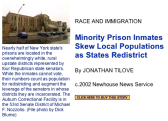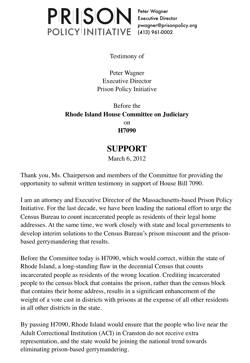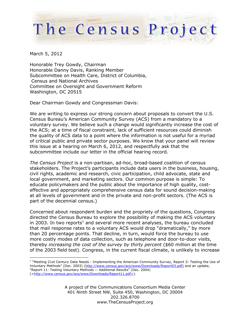Advocates salute Virginia for changing law to allow counties to avoid prison-based gerrymandering
On Friday, Virginia Governor Bob McDonnell signed HB13, giving more rural counties the option of avoiding prison-based gerrymandering.
March 27, 2012
For Immediate Release: March 27, 2012
| Dēmos | Anna Pycior | (212) 389-1408 | apycior@demos.org |
| Prison Policy Initiative | Peter Wagner | (413) 527-0845 |
On Friday, Virginia Governor Bob McDonnell signed a new law that will give more rural counties the option of avoiding prison-based gerrymandering, helping to ensure fairer representation in local government. The law, HB13, passed both Houses unanimously. It was sponsored by Delegate Riley Ingram (R-Chesterfield, Henrico, Prince George, City of Hopewell).
“HB 13 is a step forward for fairness in redistricting,” said Peter Wagner, Executive Director of the Prison Policy Initiative. “Counties will no longer be required to pad certain districts with incarcerated persons who are not true residents of the prison district. Prison-based gerrymandering distorts our democracy, and HB13 will help end that practice.” Wagner submitted testimony in support of HB13, and worked with the Richmond Times-Dispatch, Roanoke Times, Powhatan Today, the News and Advocate, and the Free Lance-Star to raise awareness about prison-based gerrymandering.
“The trend is clear: states are rejecting prison-based gerrymandering. Virginia should be congratulated for taking this common-sense step to recognize that a prison is not a home and should not be treated as such in redistricting.” said Brenda Wright, Director of the Democracy Program at Dēmos, which partners with the Prison Policy Initiative on a national campaign to end prison-based gerrymandering.
About the Virginia law
Historically, Virginia law required counties to base their legislative districts on federal Census data, denying Virginia counties the flexibility exercised by counties in other states to choose the population basis of their required redistricting. The Census Bureau counts incarcerated people – who by state law can’t vote and are not considered residents of the prison – as residents of the prison location. When Census data is used for rural county redistricting, this practice gives extra influence to the people who live next to a large prison, and dilutes the votes of residents in other districts in the same county.
In 2001, Virginia amended the law, giving counties where incarcerated people make up more than 12% of the Census population the option to avoid padding the Board of Supervisors district that contains the prison with the prison population.
Unfortunately, the 2001 law did not give all counties relief from state-mandated prison-based gerrymandering. For example, Southampton County’s prison population was too small to benefit from the 2001 law, yet the county was still forced to draw a district that was more than half incarcerated. This gave the residents of the district with the prison more than twice the political influence of the residents of other districts in the county.
The expansion of the law signed by the Governor on Friday extends the option to avoid prison-based gerrymandering to any county faced with drawing a county legislative district that is more than 12% incarcerated. Ideally, the bill would have passed last year, while redistricting was still underway. Identical language unanimously passed the House of Delegates last year, but died in Senate committee.
National context
In most states, local governments are free to avoid prison-based gerrymandering. Virginia was one of a handful of exceptions, where local redistricting is regulated in a way that is blind to the problem of prison-based gerrymandering.
Virginia’s new law brings the state in line with a national trend towards protecting local governments from the vote dilutive harm of prison-based gerrymandering. Michigan, Colorado, and New Jersey statutes explicitly either allow or require local governments to avoid prison-based gerrymandering. In Mississippi, California, and Illinois, court cases and state attorney general opinions have supported local governments in adjusting the census to avoid prison-based gerrymandering. The first two states that ended prison-based gerrymandering for state legislative districts, Maryland and New York, also passed legislation that ends prison-based gerrymandering in local governments as well.
###








